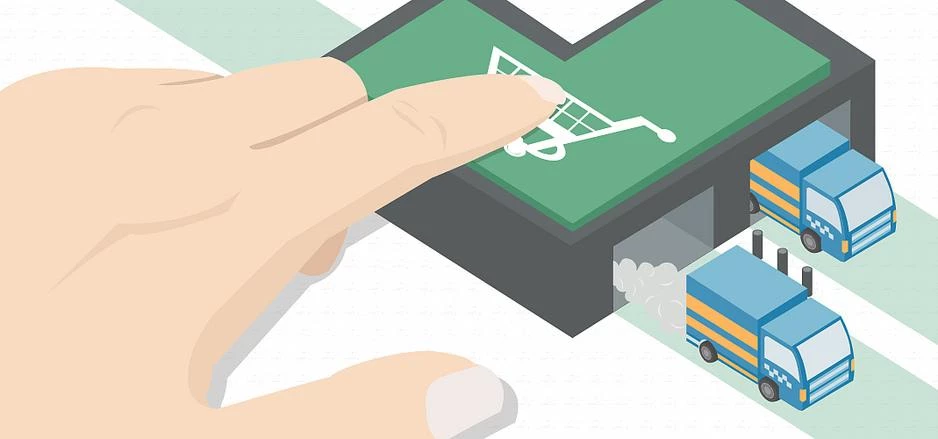
Partner Article
How businesses can offer profitable omnichannel fulfilment
With more paths to purchase than ever before, retailers are under huge pressure to provide flexible fulfilment options and meet customer expectations. In little more than a decade, omnichannel fulfilment has gone from a theoretical discussion to a retail reality. The consumer is now firmly in control of when and where they receive their products - whether that’s in store or on their doorstep - and merchants hoping to compete need to be prepared to provide seamless customer experience across all channels.
Retail behemoths such as Amazon are further fuelling this competition. Their breadth of fulfilment options, from their range of everyday delivery services through to innovative trial services such drone delivery, sees the eCommerce leader shaping the delivery landscape of tomorrow. But providing comparable alternatives is prohibitively expensive for many retailers. How, then, can merchants execute an omnichannel model to satisfy consumer expectations, while ensuring its profitability?
Build accurate inventory visibility
No matter the channel, it’s critical that retailers fulfil every order in a timely and efficient fashion. But today’s shopper journey is increasingly flexible – it could start at home, and end up with an in-store pick up, or start in-store and end with an online order.
Offering greater choice means fulfilment can quickly become chaotic. Ensuring accurate inventory visibility will be key to managing flexible fulfilment options. Connecting stock at all sources – through warehouses, stores and suppliers – will help to accurately track inventory, from initial stock to the store floor and through to replenishment. Having this oversight is crucial to optimising inventory and improving efficiency, while streamlining the process for retailers and customers alike.
Don’t lose focus on customer care
Having a more accurate overview of your inventory will be of little use to the customer if you cannot communicate this to them. Centralising your inventory gives you the oversight to provide greater customer care, before, during or after the sale – such as sending an email prompt when an item they are interested in is back in stock, or being able to tell customers exactly where their order is.
Centralising inventory and order information also means businesses have the data to develop a single view of the customer, which in turn will help drive a positive customer experience. For example, giving staff on the shop floor access to selected customer information, such as shopping preferences, allows for a seamless and personalised experience. In addition, understanding past buying behaviours opens more opportunities for retailers to upsell or cross-sell.
Make the most of bricks-and-mortar stores
To help drive the profitability of your omnichannel fulfilment, its important to capitalise on your physical stores by, for example, implementing store fulfilment options such as ship-from-store. Using your shops as a distribution hub will not only help cut down on shipping costs, but will also provide faster fulfilment for the customer than having to wait for an order from a distribution centre located further away.
At the other end of the customer journey, retailers can also use their shops for in-store pick up. In fact, harmonising delivery to a single store location is financially viable, often working out as being cheaper than sending individual orders out to customers. And in-store pick up will also help drive incremental footfall into stores, helping to drive further sales.
It’s also valuable to customers, who can enjoy the immediate gratification of getting their products on the same day, avoid expensive shipping costs, and have the benefit of in-store expertise.
However, despite noticeable improvements in using stores as alternative delivery destinations, our recent survey of European retail leaders showed that merchants may be missing a trick when it comes to in-store returns. On average, a quarter of Click & Collect retailers we surveyed did not support in-store returns of online orders – highlighting the fact that many retailers’ current systems struggle to put in place cost efficient and effective processes to return items bought online in-store.
Returns may be a costly part of the retail experience, but merchants must accept they are an unavoidable part of doing business – and take any measures they can to make the omnichannel returns process as seamless as the delivery.
Of course, becoming truly omnichannel isn’t easy. Rising consumer demands and greater competition means retailers are having to constantly fine-tune their services – but by optimising all the advantages available to them, merchants can raise their game to win the omnichannel race.
Enda Breslin is Head of Sales and Business Development Europe at leading global omnichannel ecommerce technology and operations provider, Radial.
Radial recently released their European eCommerce Delivery & Returns Index 2016. The survey of 100 leading online and multichannel retailers selling in the UK, France and Germany will help you understand customer expectations in each market when it comes to delivery and returns. The report is available to download here.
This was posted in Bdaily's Members' News section by Enda Breslin, Radial .








 How to make your growth strategy deliver in 2026
How to make your growth strategy deliver in 2026
 Powering a new wave of regional screen indies
Powering a new wave of regional screen indies
 A new year and a new outlook for property scene
A new year and a new outlook for property scene
 Zero per cent - but maximum brand exposure
Zero per cent - but maximum brand exposure
 We don’t talk about money stress enough
We don’t talk about money stress enough
 A year of resilience, growth and collaboration
A year of resilience, growth and collaboration
 Apprenticeships: Lower standards risk safety
Apprenticeships: Lower standards risk safety
 Keeping it reel: Creating video in an authenticity era
Keeping it reel: Creating video in an authenticity era
 Budget: Creating a more vibrant market economy
Budget: Creating a more vibrant market economy
 Celebrating excellence and community support
Celebrating excellence and community support
 The value of nurturing homegrown innovation
The value of nurturing homegrown innovation
 A dynamic, fair and innovative economy
A dynamic, fair and innovative economy